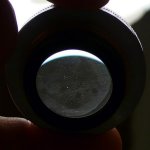Dave S.
Well-known
I recently picked up a nice Agfa Super Silette with the Solagon 1:2/50 in a Synchro-Compur shutter. Upon unscrewing the lens from the front of the camera and looking at it closely under bright light I noticed what appeared to be tiny bubbles spread fairly evenly across the lens. These bubbles seemed to be between the elements and did not clear with normal cleaning.
When the lens is on the camera the bubbles are not visible even when viewed under bright light (in fact the lens looks very clear). Based on some internet research I've done I suspect these bubbles are due to balsam deterioration / lens separation.
I have a couple of questions about this issue:
1. Does this sound like balsam deterioration / lens separation to others or is it perhaps something else?
2. If it is balsam deterioration / lens separation what kind of effect will this have on image quality (if any)?
Thanks, Dave
When the lens is on the camera the bubbles are not visible even when viewed under bright light (in fact the lens looks very clear). Based on some internet research I've done I suspect these bubbles are due to balsam deterioration / lens separation.
I have a couple of questions about this issue:
1. Does this sound like balsam deterioration / lens separation to others or is it perhaps something else?
2. If it is balsam deterioration / lens separation what kind of effect will this have on image quality (if any)?
Thanks, Dave
Last edited:



